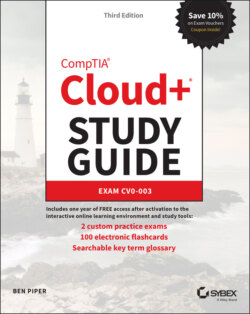Читать книгу CompTIA Cloud+ Study Guide - Ben Piper, David Higby Clinton - Страница 34
Machine Virtualization
ОглавлениеMachine virtualization—also called server virtualization—involves abstracting the resources of a single physical server into multiple virtual machines (VMs). Essentially, a VM is a software-emulated computer consisting of virtual CPUs (vCPUs), memory, storage, and networking. Like a real computer, a VM runs an operating system (OS) called a guest OS. The software that creates virtual machines and performs this abstraction is called a hypervisor. The hypervisor also defines the properties of a VM, including the following:
The number of virtual CPUs
The amount of random access memory (RAM)
The type and amount of storage
Virtual network interfaces and how they're connected
We'll discuss hypervisors in more detail in Chapter 2, “Cloud Deployments.” Virtualization not only allows for more efficient use of hardware resources, but also reduces power consumption, cooling, and the server footprint in data centers. This is illustrated in Figure 1.5, where many VMs share common hardware platforms.
A physical server that runs VMs is called a virtualized host.
FIGURE 1.5 Virtualized computing
The proliferation of Internet-capable devices, such as smartphones and tablets, means an increased strain on IT infrastructure. Organizations that want to offer services to these customers can benefit greatly from the cloud's utility-like service model (see Figure 1.6). The cloud supports instant access in an always-on environment.
FIGURE 1.6 Cloud computing
